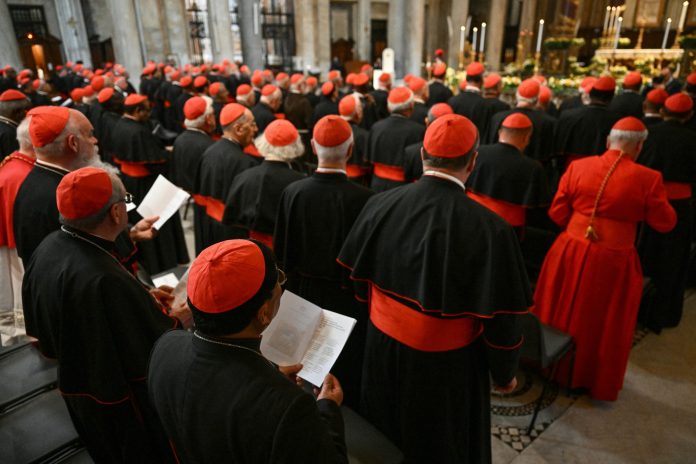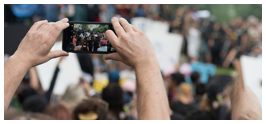The 2025 conclave that will choose the next pope will see the largest number of Filipino cardinal electors in history, underscoring the Philippines’ rising influence in the universal Church.
Cardinals Luis Antonio Tagle, Jose Advincula, and Pablo Virgilio David are in Rome to cast their ballots in the closed-door voting held beneath Michelangelo’s frescoes in the Sistine Chapel.
This marks a historic first: previous papal elections included only one or two Filipino “princes of the Church.”
From the lone vote of Manila Archbishop Rufino Santos—the first Filipino cardinal—in 1963, to two electors in the 1978 conclaves (Jaime Sin of Manila and Julio Rosales of Cebu), and back to single representation in 2005 (Ricardo Vidal of Cebu) and 2013 (Tagle of Manila), Filipino participation in papal elections has been relatively modest.
In the 2013 conclave that elected Pope Francis, Italians had the largest bloc with 28 electors, followed by Americans with 11. Europeans accounted for half of the 115 cardinal electors under age 80.
The 2025 conclave, however, reflects a shift toward the Church’s “peripheries,” initiated by the late Pope Francis, who reshaped the College of Cardinals to better reflect global diversity. This year, Europeans make up just 39% of electors, while Asians account for 17%, outnumbering North Americans at 14%.
The Philippines is already home to the third-largest Catholic population in the world after Brazil and Mexico, and the Filipino diaspora had been credited by the late Pope Francis himself for being “contrabandistas de la fe” (“smugglers of the faith”) wherever they migrated or worked.
Leading the Filipino delegation is Tagle, 67, pro-prefect at the Dicastery for Evangelization—a key post at the Vatican. When he was archbishop of Manila in 2012, Tagle was created cardinal by Pope Benedict XVI. In 2019, the Jesuit-trained and American-educated cleric was called by Pope Francis to serve at the Vatican bureaucracy. As he combines diocesan and Curia experience plus charisma as a sought-after speaker, Tagle often made the list of “papabile” or electable cardinals. This is Tagle’s second time to join a conclave.
Advincula, 73, succeeded Tagle as archbishop of Manila. A surprise appointment to the College of Cardinals in 2020 while still archbishop of Capiz—a non-cardinatial see—Advincula is the first product of the Ecclesiastical Faculties of the University of Santo Tomas, the pontifical institution of the Dominican Order in Manila that is always visited by popes, to enter a conclave.

Another prelate from a non-cardinatial see, David, the bishop of Kalookan, became a cardinal in the December 2024 consistory. Educated by the Jesuits at Ateneo de Manila, theologians of Leuven in Flanders, and the French Dominicans at École Biblique in Jerusalem, David, 66, had settled to a life of scholarship as a Bible professor in the Archdiocese of San Fernando, in his native Pampanga.
But he was made auxiliary bishop of Pampanga in 2006 and Kalookan bishop in 2016, and was elected president of the Catholic Bishops’ Conference of the Philippines in 2021 and reelected in 2023 — the first sitting CBCP president to become a cardinal.
Earlier in his papacy, Pope Francis gave the red hat to then Cotabato Archbishop Orlando Quevedo, a first for Mindanao. The Oblate missionary and former CBCP president, a towering figure in the Christian-Muslim dialogue, is also in the Vatican to join the general congregations of the College of Cardinals, but cannot vote in conclave as he is well past the age of 80.
All three Filipino electors joined the 16th Ordinary General Assembly of the Synod of Bishops in the Vatican, the “Synod on Synodality” convened by Pope Francis in October 2023 and October 2024 in an attempt to chart a more inclusive course for the Church.
Advincula and David established synodal processes in their home dioceses. Tagle advocated for the pastoral approach, even bringing the synod’s secretary general, and fellow “papabile,” Cardinal Mario Grech of Malta, to Manila for the 10th Philippine Conference on the New Evangelization.
Before leaving for Rome, David told CBCP News the conclave should be viewed as a spiritual exercise, not a political one. “No candidates in a conclave,” he said.
For Archbishop Charles Brown, the apostolic nuncio to the Philippines, “[I]t’s important to remember that the Holy Spirit has already decided who the next pope will be.”
“It’s up to the cardinals now to make that decision manifest,” he said.
The conclave officially opens on May 7 with the “Pro Eligendo Romano Pontifice” Mass at 10 a.m. in St. Peter’s Basilica. At 4:30 p.m., the cardinal electors will enter the Sistine Chapel to the hymn “Veni Creator Spiritus,” invoking the Holy Spirit to guide their decision.
Whether or not a Filipino cardinal steps out onto the loggia of St. Peter’s Basilica as the 267th pope, history will bear witness to the moment: the voice of the Filipino faithful has become louder inside the marble halls and basilicas of Rome, promising a new chapter in the life of the Church.









